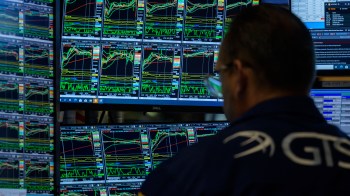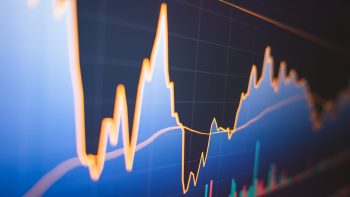What the GDP numbers tell us
TEXT OF STORY
KAI RYSSDAL: You know, this is no easy thing for me to say, but sometimes I’m not the best guy to actually deliver the day’s news. So today, I’m going to let somebody else do it. I’ll just comment and clarify where appropriate.
President Barack Obama: This morning the GDP revealed that the recession we faced when I took office…
He’s talking about first quarter gross domestic product here, January through March.
Obama: …Was even deeper than anyone thought at the time.
That is, the economy shrank at an annual rate of 6.4 percent.
Obama: But the GDP also revealed that in the last few months, the economy has done measurably better than we had thought.
The last few months would be April through June, the second quarter. GDP shrank at a rate of just 1 percent.
Obama: Better than expected.
Best guesses had been for a decline of a percent and a half.
Obama: And as many economists will tell you that part of the progress is directly attributable to the Recovery Act.
So that’s a little bit of bragging there. The Recovery Act’s better known as the president’s stimulus program.
Obama: This and other difficult, but important steps that we’ve taken over the last six months have helped us put the brakes on the recession.
Or so the conventional wisdom goes, the president hopes.
Our senior business correspondent Bob Moon had a question, though.
Bob Moon: What do you think? Is the worst over?
Ken Mayland: This economy is clearly making a transition from recession to recovery.
Ken Mayland was crunching today’s numbers at Clear View Economics. He’s convinced they show a turnaround has begun — thanks mainly to government stimulus efforts.
They also show another rise in the personal savings rate. And he says that’s a promising sign that consumers will fill the gap when that government money goes away.
Mayland: This is typically what you see in a recovery. With improved confidence, people will start working down their savings rate, which means increasing their spending rate. And that helps get the juices flowing in the economy.
Most economists do expect to see a relative surge in growth for the rest of the year. But many doubt its staying power. State and local budgets also played a key role in lifting the economy, but they’re now tapped out. So their contribution won’t be repeated.
And TD Bank chief economist Joel Naroff warns that the recession has been so deep, recovery is relative.
Joel Naroff: We’re at the bottom in so many things, and it’s very easy to get a small increase and get a large percentage change. That tells us growth looks really good, but I call that a head fake.
Once the stimulus money is spent, Naroff worries consumers will still be digging out from under record debt, weak wage growth and — as President Obama pointed out today — lingering unemployment.
Barack Obama: As far as I’m concerned, we won’t have a recovery as long as we keep losing jobs.
The president warned it won’t feel like a recovery overnight. Economist Ken Mayland agrees.
Mayland: What I think the public has in mind with the word “recovery” is a full return to better times and that’s not going to be the case for a long time.
As Mayland explains it, “Recovery” is not the same as “recovered.”
I’m Bob Moon for Marketplace.
There’s a lot happening in the world. Through it all, Marketplace is here for you.
You rely on Marketplace to break down the world’s events and tell you how it affects you in a fact-based, approachable way. We rely on your financial support to keep making that possible.
Your donation today powers the independent journalism that you rely on. For just $5/month, you can help sustain Marketplace so we can keep reporting on the things that matter to you.


















